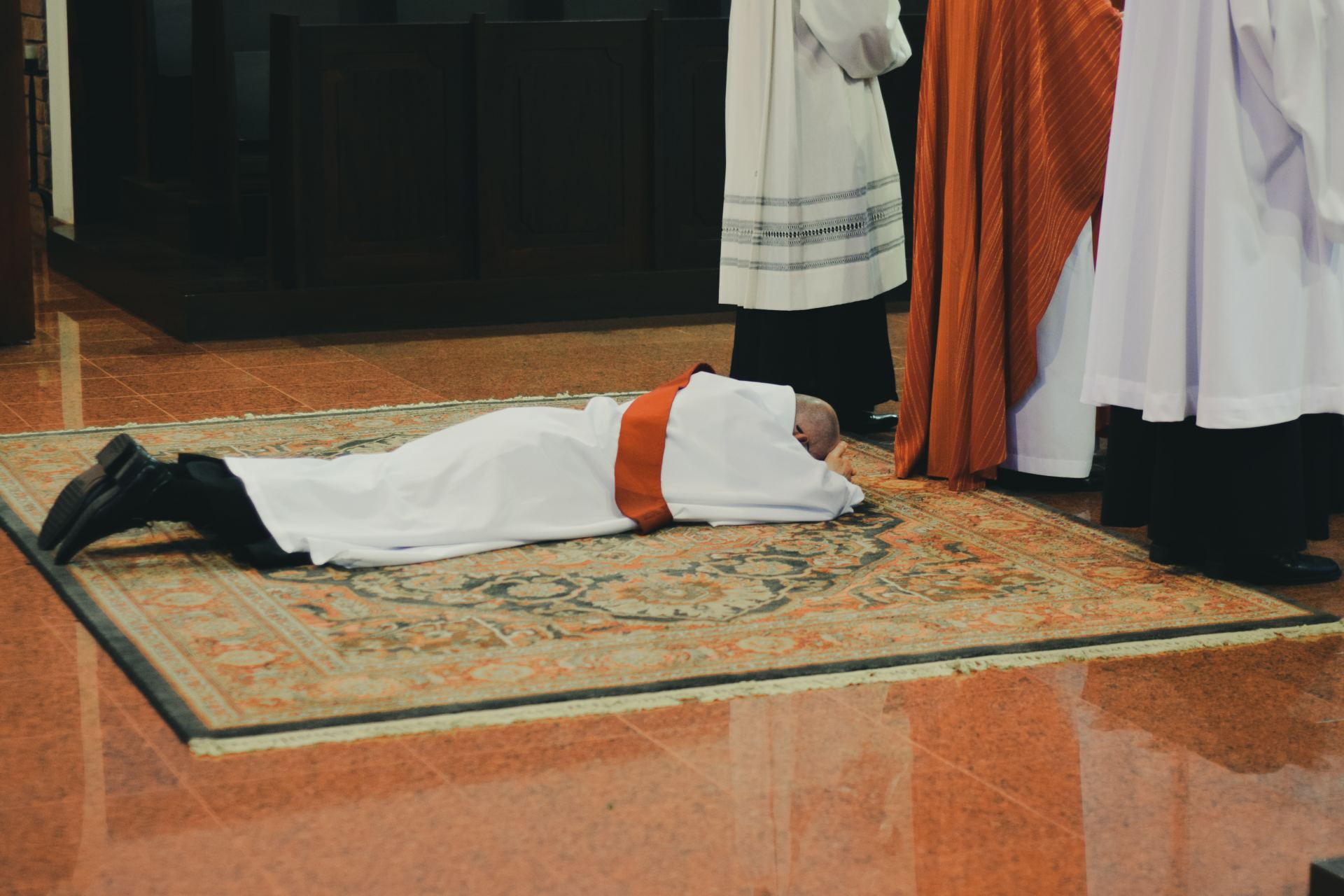The Trouble with Jesus
by Constance Hastings
Holy Doubt
April 5, 2021

Could it be that faith is not actually a fully convinced mindset? Could it be that to truly have faith an element of doubt, perceptions that rest in possibly not as much as possibly so, is necessary? Do faith and doubt exist not as opposites but as integral parts of each other?
The door was locked. The women had told them they’d been to the tomb, but Jesus’ body was not there. Instead, Mary Magdalene ran and found them with her message, “I have seen the Lord!” The disciples gathered, but still they locked the door. Likely, they had doubted her. Mary Magdalene had once been possessed with demons, so the story around her goes. After the trauma of three days ago, it would be easy to think she had relapsed into her old sickness, seeing what was not really there. Doubt was rational.
Rational except when the door of it was blown off. Despite the bolt holding it shut, a locked door was of no consequence when suddenly Jesus in the flesh was among them. “Peace be with you,” he said, showing them his scarred but fully healed hands and side. What had never been done before, what could never be explained with rational proof, had happened. His demise by brutal execution was now secondary to this new life that reversed death and its finality.
Joy doesn’t adequately express what happened to these friends who had hunkered down in fear for their lives. Certainly, they were thrilled to see Jesus alive again. But would they have reacted in ecstasy if they had in the least believed that Jesus would do as he had told them, die and return alive in three days? Instead, their doubt had slammed into their faith.
They weren’t alone. Thomas, one of the original twelve, wasn’t with them that night. When told Jesus was alive, he wouldn’t buy it. Furthermore, he wouldn’t accept just an appearance but declared he had to actually touch Jesus’ hands and sword-pierced side to believe it had happened. No ghost was going to change his mind.
Jesus delivered eight days later. Again, despite locked doors, Jesus appeared to the disciples, this time including Thomas. Like before, Jesus greeted them, “Peace be with you.” Peace: don’t be afraid. Peace: this isn’t like anything else you or the whole world has ever known. Peace: prepare to have all your assumptions and expectations reversed. Peace: lean in, accept what I have done. “Peace be with you.”
He invited Thomas to touch him literally in his points of pain. Jesus knew this was the place where Thomas’ doubt as well as so many others’ questions have had to pause, sort out in mind and soul if this could be. Only by fully accepting Jesus’ death can there be as well an acceptance of resurrection. One won’t have significance without the other. Faith must be linked with doubt for the two to become belief.
Thomas exclaimed, “My Lord and my God!” He was the first to declare the divinity of Jesus Christ, not just as one who is a Savior whose death and resurrection bought a ticket to heaven, but as ruler over all that life may bring to us and all in life that needs reversal, even as we wrestle with our doubts.
Jesus acknowledges to Thomas, “You believe because you have seen me.” But there are those who perhaps have even more of a blessing than a physical revelation. To those who did not know him then and even more so to all the world that will come later, Jesus says, “Blessed are those who have not seen and yet have come to believe.” Blessed are those who have not had the benefit of miracles and heavenly revelation. Miracles help some, but those who “come to believe” without them very likely have the greatest miracle of all, the miracle of a faith that has acknowledged doubt.
Jesus blessed all those -- from Thomas up to now -- who have managed to believe without the benefit of direct experience; all those, that is, who have managed to come to a faith that is not the opposite of doubt but which lives with doubts and yet still finds a way to believe.
It is in the not knowing how God does what God does that faith is centered, stretched and filled. But it usually starts with some honest doubt. Honest doubt leads to honest belief because the journey of faith is just that, a journey where we come to believe.
John 20:19-29

This is one of those things that might very well hurt your head but take two of your favorite OTC and go with it. Mortals experience time chronologically, like from the nanosecond to millennials. God’s got another sense of time which is kairos. So when Jesus said no one knows the day or hour, he was speaking of kairos, God’s time.

Whoa, baby, don’t you know what week this is? For centuries, no, a couple of millennia at least, people have taken time, even created festivals and holidays, just for the purpose of giving thanks to their Creator God and those who are much appreciated in this life we have. Your question implies that thanking God is not important or necessary. Where are you going with this?

The Trouble with Jesus was never did he attempt to be a leader, king, messiah who used force, oppression, military and political power, and control. Yet, if you’re looking for one who commanded rule in beliefs, values, and heart like no other across the empires, globe and millennia, you’ll find a king.

Jesus, we’ve noticed. Time after time, you unloaded on those who set the example of what the Law required. What was worse, you buddied up with those of questionable repute. You’d think if you’d really wanted to change the world, you’d garner influence from those who ran things. Usual common sense just isn’t your forte.
Jesus didn’t tell stories or preach so good people can be good people. The Trouble with Jesus is good people are not much use to him.

So Jesus, ... to get through this life, you ask for this thing called faith. How is that just wishful hope for something to hang on to, even if it’s not real? Oh, you’re good at telling us how much a person has to have. Mustard-seed size, you say. That kind of example may have worked in your day, but if you are going to take me down this exercise of improbability, give it to me in some way I can wrap my head around it.




